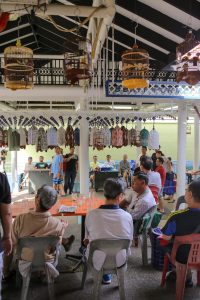Recognising the roots of racism in Singapore
June 23, 2021

In “Recognising the roots of racism in Singapore” (AcademiaSG, 2021), Associate Professor Chong Ja Ian (NUS Department of Political Science) discusses the recent incidents of racial discrimination that have occurred in Singapore and the media’s varied responses towards them. He outlines the definition and history of Critical Race Theory and how certain media outlets have misunderstood its message when citing it in reference to the recent events in Singapore.
Critical Race Theory, which originates from the United States of America (USA), explains how racism stemming from legal, social, and political structures worsens the disadvantages that minorities already face. Critical Race Theory focuses on the greater structures that perpetuate these differences, rather than the actions of sole individuals. In the context of the USA, the existence of these structures empower white Americans to enjoy greater privileges than those belonging to different ethnic groups. Though Critical Race Theory may not always be fully applicable to societies of different contexts, it allows for the examination of privilege originating from social structures.
Those who support the American right wing such as white supremacist groups and politician Donald Trump, have opposed Critical Race Theory and even spread false portrayals of it, by claiming that it stands for divisive perceptions, such as the encouragement of atheism. Locally, an editorial published in Lianhe Zaobao similarly depicted Critical Race Theory in a misleading manner, by asserting that it promotes “hatred of white people” and further extending it to the context of Singapore.
Though Singapore does not have a history of slavery or violent racial hatred, racial discrimination and prejudice still exists, albeit typically in the form of casual racism targeted at ethnic minorities which may be encountered daily. Ironically, this treatment mirrors that which the Chinese in Singapore used to face under colonial rule.
A/P Chong highlights that the incidents of racial discrimination recently raised in the news are not once-off occurrences, but should be viewed as revealing how racism has become a real problem in Singapore which needs to be addressed, rather than swept under the rug. He clarifies that Chinese privilege does not mean that the Chinese in Singapore do not face any difficulties, but that because of the numerical majority that the Chinese enjoy, the challenges that minority groups face may end up going unnoticed.
Other than race, there are also other factors which may lead to greater disparity in societies – from wealth to gender and social status. He notes that privilege is inherently intersectional and thus cannot be measured based on a single criterion.
While conversations on serious topics like these between different groups may be challenging to maneuver, they are necessary to help build important shared values like trust and understanding. Rather than harping on the supposed harmony present in Singaporean society and how problems pointed out do not actually exist, open dialogue which may better foster principles like empathy, tolerance, and sincerity are what will truly push Singapore’s multi-ethnic society to work towards a higher level of mutual accommodation.
Read the original article at AcademiaSG (in Mandarin) here.
Read the English translation of the article here.
